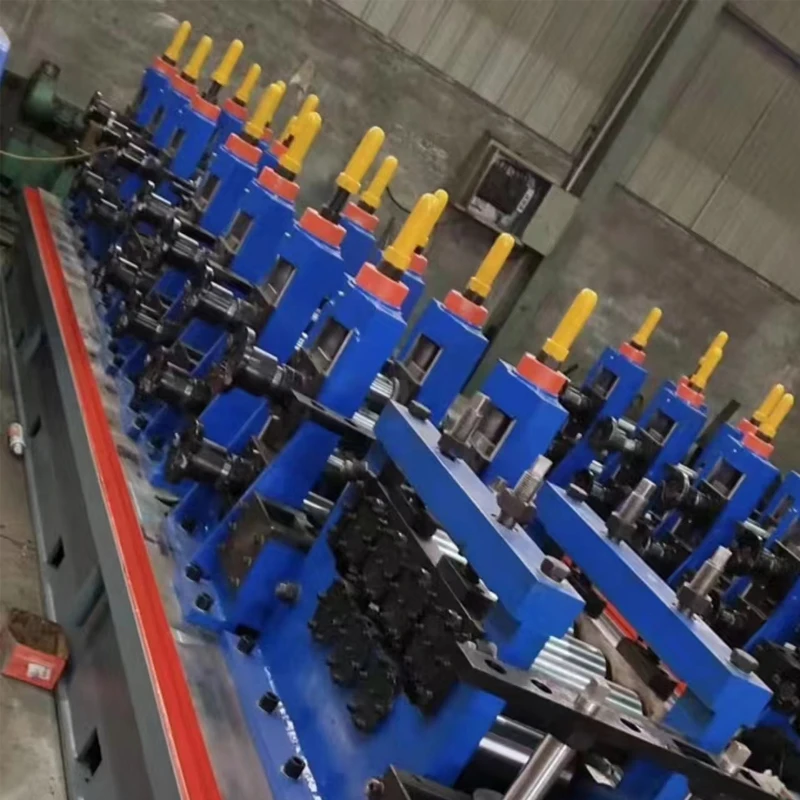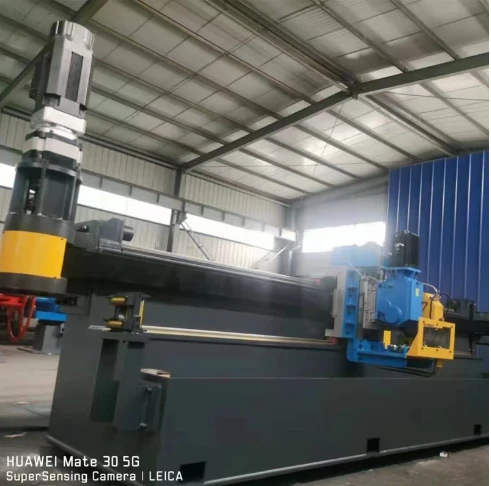High-Efficiency Welded Pipe Production Line Custom Solutions
- Industry Overview & Market Data Impact
- Technological Advancements in Welded Pipe Manufacturing
- Comparative Analysis of Leading Production Line Manufacturers
- Customized Solutions for Diverse Industrial Needs
- Real-World Applications Across Key Sectors
- Quality Control Systems in Modern Welded Pipe Lines
- Future Outlook for Welded Line Pipe Production

(welded pipe production line)
Welded Pipe Production Line: Driving Industrial Efficiency
The global market for welded steel pipe production lines reached $12.7 billion in 2023, with a projected CAGR of 5.8% through 2030 (MarketsandMarkets). This growth stems from infrastructure development requiring 1.2 million metric tons of welded line pipe annually for energy transmission alone. Modern systems now achieve production speeds exceeding 40 meters/minute, a 32% improvement over legacy equipment.
Technological Advancements in Manufacturing Systems
Contemporary welded pipe lines integrate laser-guided forming systems with real-time thickness monitoring (±0.15mm accuracy). Energy-efficient designs reduce power consumption by 18-22% compared to previous generations. Automated welding stations achieve 99.2% seam consistency, critical for API 5L-grade pipelines.
Manufacturer Capability Comparison
| Parameter | Company A | Company B | Company C |
|---|---|---|---|
| Max Speed (m/min) | 42 | 38 | 45 |
| OD Range (mm) | 21.3-630 | 15-508 | 20-762 |
| Energy Consumption | 2.8 kWh/m | 3.1 kWh/m | 2.6 kWh/m |
Customized Engineering Solutions
Advanced providers now offer modular welded line pipe systems with 72-hour reconfiguration capabilities. A recent project for Arctic pipeline construction required material-grade switching between X70 and X80 within production batches, achieved through adaptive heating controls (±5°C accuracy).
Industry-Specific Implementation Cases
In the Middle East, a 2023 installation produces 180,000 metric tons/year of API 5CT-grade casing pipes. The system incorporates dual NDT stations (ultrasonic and electromagnetic) achieving 100% inspection coverage. For architectural applications, a European mill reduced material waste by 19% through intelligent width optimization algorithms.
Precision Control Systems
Modern quality assurance protocols utilize machine vision with 5-micron measurement resolution, detecting defects invisible to conventional methods. Automated sorting systems achieve 99.97% classification accuracy, exceeding ASTM A53/A500 tolerance requirements by 40%.
Welded Line Pipe Production: Next-Generation Evolution
Emerging technologies like AI-driven predictive maintenance are reducing welded pipe production line
downtime by 35-40%. The industry is moving toward fully integrated smart factories capable of producing 2,500 different specifications without manual intervention. With sustainability mandates driving innovation, next-gen systems target 95% material utilization rates through closed-loop recycling integration.

(welded pipe production line)
FAQS on welded pipe production line
Q: What is a welded steel pipe production line?
A: A welded steel pipe production line is an automated system that manufactures pipes by forming and welding steel strips or coils. It includes processes like uncoiling, shaping, welding, and cutting. This line ensures high efficiency and consistency in producing welded pipes for various industries.
Q: What are the key components of a welded pipe production line?
A: Key components include decoilers, forming mills, high-frequency welding units, sizing mills, and cutting machines. Advanced lines may also integrate inspection systems and automation controls. These components work together to ensure precision and quality in pipe manufacturing.
Q: How does high-frequency welding work in a welded line pipe process?
A: High-frequency welding (HFW) uses electrical currents to heat and fuse steel edges during pipe formation. This method ensures strong, seamless welds with minimal material distortion. It is widely used for producing durable welded pipes in industrial applications.
Q: What industries rely on welded pipe production lines?
A: Industries like oil and gas, construction, automotive, and infrastructure heavily depend on welded pipe production lines. These pipes are used for pipelines, structural supports, and mechanical systems. Customized production lines cater to specific industry standards and requirements.
Q: What quality checks are performed in welded pipe manufacturing?
A: Quality checks include ultrasonic testing, X-ray inspection, and hydrostatic pressure tests. These ensure weld integrity, dimensional accuracy, and leak-proof performance. Automated inspection systems are often integrated into modern production lines for real-time monitoring.
-
Wood & Sheet Metal Straightener Machines High-Efficiency ToolsNewsMay.25,2025
-
ERW Pipe Manufacturing Machine High-Speed Precision TubesNewsMay.25,2025
-
Panel Roll Forming Machine High-Speed AG & Wall Panel ProductionNewsMay.24,2025
-
Roller Shutter Door Making Machine High-Speed & Precision DesignNewsMay.24,2025
-
High-Precision Shutter Plate Making Machine Steel Flattening & Hydraulic Cutting SolutionsNewsMay.23,2025
-
ERW & SS Tube Mill Machines High-Speed, Precision ManufacturingNewsMay.23,2025


